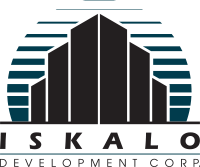Many commercial property owners are investing in green building design to reduce the harmful environmental impacts buildings can have on cities, while also saving energy. Find out how you can make your business’s commercial building more eco-friendly with these green building design ideas!
Sustainable Construction Materials
Use green building materials to construct a sustainable building. A number of factors contribute to the materials’ eco-friendliness. The best sustainable materials hold up well in the climate in which they’re being used, have low embodied energy, are locally sourced, and require little transportation. According to Smart Cities Dive, the most eco-friendly building materials are bamboo, cork, reclaimed or recycled wood, metal, precast concrete slabs and sheep’s wool insulation.
Efficient Lighting
If you’re a commercial landlord, lighting can comprise a large portion of your or your tenant’s total energy costs. Studies by the United State Energy Information Administration (EIA) estimate that lighting equates to 11% of the commercial sector’s total costs. Efficient and eco-friendly lighting schemes are a major opportunity in reducing those costs and power usage overall.
Incorporate energy-efficient lighting into your sustainable building design for less energy use and reduced electricity bills. While LED and CFL lights may cost more upfront, they use less energy and last longer than incandescent lights. Commercial buildings with lots of windows can utilize natural light for even lower energy costs.
Similar to motion detection used on bathroom sinks and toilets, there are also sensor systems available for commercial lighting. They are available in two different types. The first is manual intelligent control (MIC), which saves energy and lowers a building’s carbon footprint by utilizing sensors to detect when someone is in the area and adjust lighting accordingly. This helps avoid the energy suck that can occur when lights are left on after the workday is over and everyone has left the building.
Remote intelligent control (RIC) is a more automated version of MIC, allowing for more customization and lighting-level control. Its sensors can adapt to weather and time of year, controlling not only the off/on of lighting but the light level based on time of day and season. These lighting systems can be especially effective in large industrial settings, where lighting can be adjusted based on location in the building and the work being performed.
Natural Ventilation
Natural ventilation methods, such as solar heating or thermal mass cooling, use passive systems, rather than mechanical, to supply outdoor air to a building’s interior for ventilation and cooling. Natural ventilation allows the outside weather to provide low humidity and moderate temperature wind currents as an alternate heating and cooling source. They provide the most comfortable and energy-efficient environment for employees and other building occupants.
Natural ventilation is not only better for the environment but better for those occupying the structure and breathing the air inside it. The cleaner air also improves the longevity and energy efficiency of traditional HVAC systems, which require less maintenance and use less power when they are less bogged down by dust and debris.
The onset of the COVID-19 pandemic put renewed emphasis on indoor ventilation, with natural ventilation becoming a preferred alternative to active microbial filtration systems that can be expensive and energy inefficient for future commercial structures.
Environmentally-Friendly Flooring
There are plenty of eco-friendly flooring options to choose from today. Cork, bamboo, linoleum, reclaimed hardwood, tile, concrete and carpet are just a few of the forest-friendly flooring materials for your green space. These flooring options will also provide the aesthetic you’re looking for in your sustainable commercial building.
Eco-Friendly Roofing
Commercial property owners can make a valuable contribution toward a greener environment by installing eco-friendly roofing. Metal, wood shake, slate tile, recycled content and rubber are some popular roofing materials and systems designed to maximize energy efficiency. Green roofs are another eco-friendly roofing option where the top of a building is partially or completely covered with vegetation planted over a waterproof membrane.
Like body heat escaping the head, the design of a roof and the materials used to build it can impact the energy efficiency of the entire building. Some eco-friendly roofing designs include shapes that allow for proper ventilation to control heat and moisture. This allows for improved temperature control throughout the building.
In the long run, this saves on both heating and cooling costs. There are active and passive roof ventilation systems, each with its own benefits. The roof can be designed to allow the shifting of air within attic spaces or it can be pumped out by HVAC systems. But these active air ventilation systems can use a lot of electricity in order to work. Updated active vents avoid this pitfall and manage to be green with either a design that does not require electricity or includes solar panels on its exterior to efficiently generate its own power.

